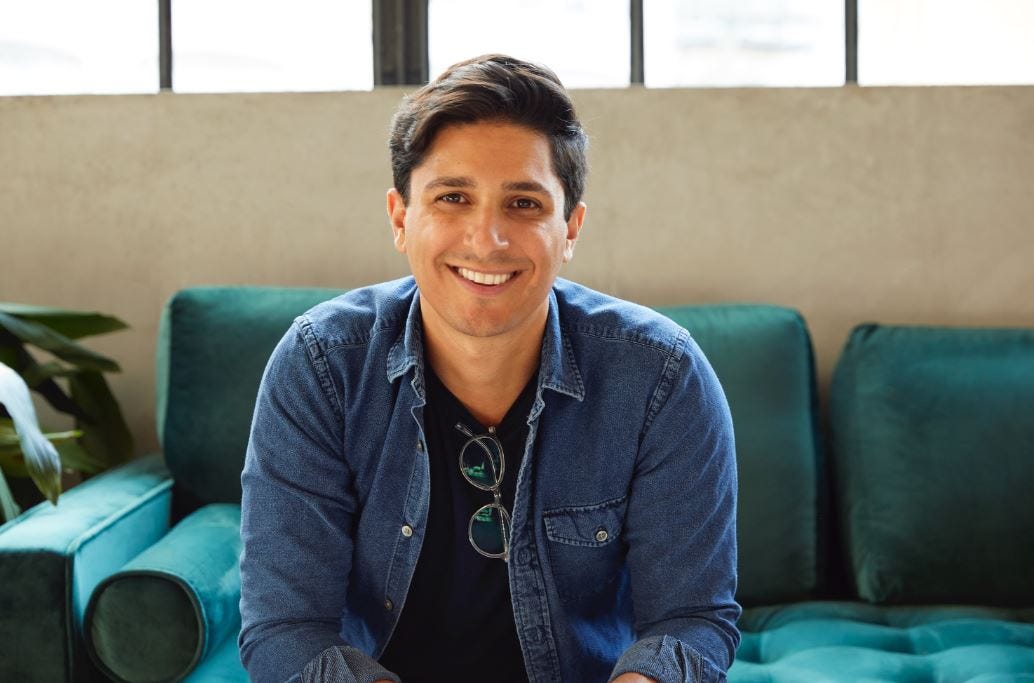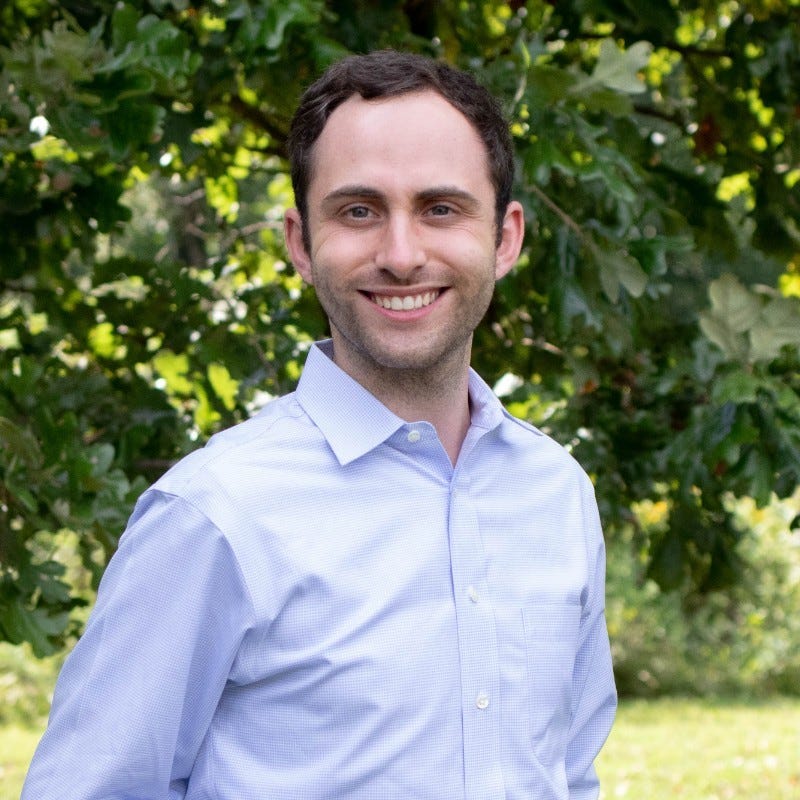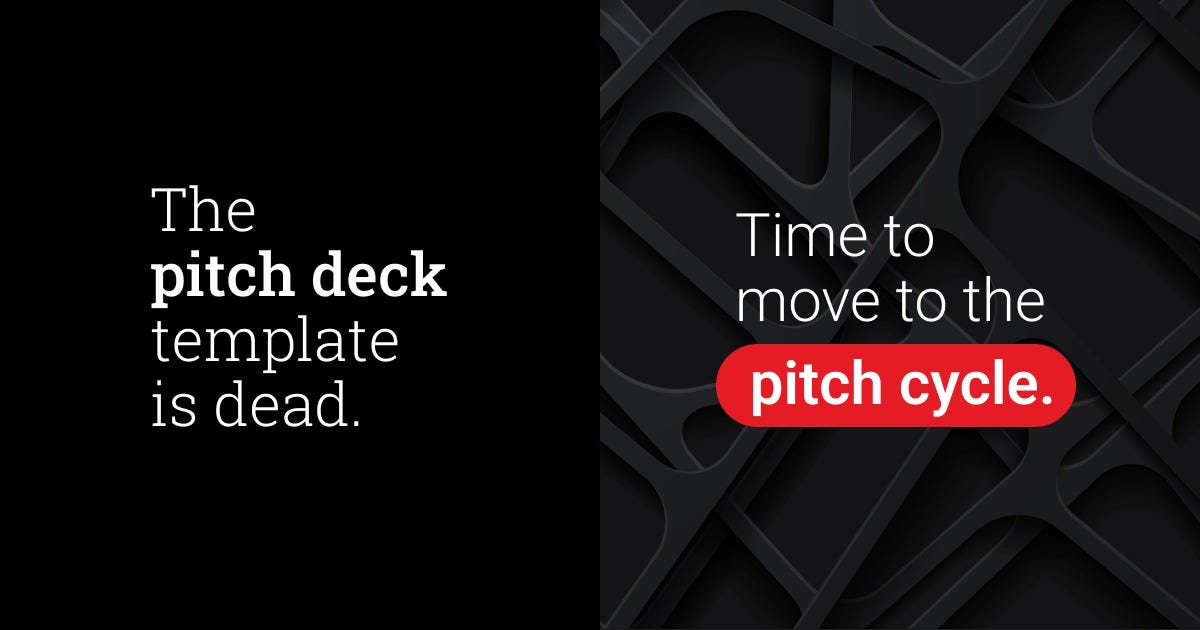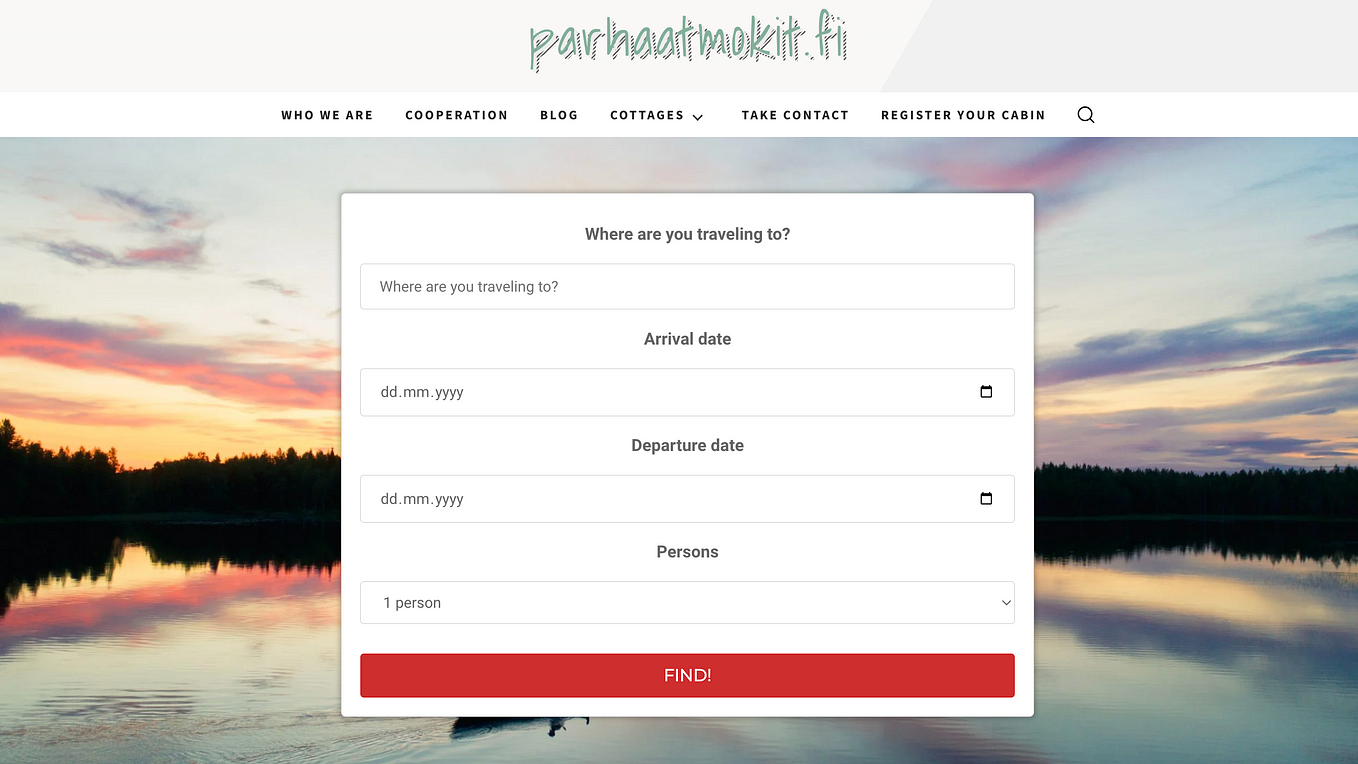Naomi Allen, Brightline, on evolving digital health businesses in changing environments
Subscribe for your weekly fix of health tech stories, wherever you like your news: Substack, Twitter, Apple, or Spotify
In this episode, we interview Naomi Allen, CEO and Co-Founder of Brightline, a behavioral health care technology company delivered for families and children. We discuss her amazing journey at the forefront of the new digital health wave as one of the founding team members of Castlight, her leadership lessons from Livongo and the amazing story of Brightline and how they launched months before their plan to serve families during the COVID and behavioral health pandemic.
Naomi is a leading entrepreneur with over 20 years of hands-on experience developing high-growth healthcare technology companies. Naomi serves on the board of Bright Health, a consumer focused and technology enabled health insurance company. Prior to starting Brightline, she was the Chief Growth Officer for Livongo and a founding team member of Castlight Health. Before that, Naomi was a leader in McKinsey’s Silicon Valley office, helping to build their West Coast healthcare practice. She holds an MBA from Stanford Graduate School of Business and received her undergraduate degree at UNC-Chapel Hill.
In 2019, Naomi founded Brightline to reinvent the way behavioral healthcare is delivered for children and families. Brightline is delivering integrated care through innovative technology, virtual behavioral health sciences, services, and collaborative care teams focus on supporting children across the developmental stages in their families. Most recently, Brightline raised $20M Series A funding led by Threshold Ventures and Oak HC/FT.
Start — 08:00: Naomi’s foray into the world of healthcare technology
- To work on the clinical or business side of healthcare?: As a daughter of a physician, Naomi always thought that she would pursue medicine and had studied pre-med in undergrad. In the early 90s, the managed care landscape was rapidly changing and many clinicians were uncertain about the role providers played in determining the best care pathways. She ended up deciding to learn more about the business side of healthcare and beginning an impressive journey in leading healthcare technology innovation.
- The beginning of healthcare technology for Naomi: Her first job out of college was at Deloitte in their health practice. While at Deloitte, Naomi had a profound experience working at Hospital of the University of Pennsylvania (HUP). Her team spent more than 8 months working on hospital tracking and at the time, the provider industry was pre-EPIC roll out and was still dealing with paper-based medical records. She ended up having to teach herself Visual Basic code and creating an operational workplace system, and that was when she fell in love with technology. She has continued to embark on an incredible ride combining healthcare and technology across the next 25 years of life.
- Venturing outside comfort zones: After Stanford Business School, Naomi worked at McKinsey’s new healthcare technology practice. Her last project at McKinsey was working with McKesson and at the time, McKesson had been buying startups. One of the startups was Relay Health and was founded by serial entrepreneur, Giovanni Colella. While he was her client, Giovanni approached Naomi saying that he was going to leave McKesson and didn’t know what he was going to do next and that it would be fun to work together. At the time Todd Park (Co-Founder of Devoted Health) was leaving Athena Health after Athena’s IPO. In 2008, Gio, Todd, Bryan Roberts (Partner at Venrock), Jim Griswold and Naomi got together and started to think through what the big gaps in the healthcare market were in the pre-digital health age and that was when Castlight was formed.
Castlight Health is a public healthcare navigation company, offering comparison tools showing price and quality metrics for tests and procedures offered by healthcare providers.
06:41–10:00: Building the first wave of digital health at Castlight
- Building solutions for the next wave of healthcare: Castlight was formed not with one specific idea but the intention of embarking on a healthcare exploration, catalyzed by a small and mighty team and some early seed funding from Venrock. Back then, there wasn’t a language around “Health 2.0” and they had to help pave the early path of digital health. Naomi helped to lead strategy and BD and define their MVP product offering and that really got me Naomi to fall in love with startups.
- Building a sales around a new industry: As the first sales person at Castlight, Naomi had to build a 50 person sales teams pretty quickly. At the time, there weren’t many people who were proficient in digital health sales and so Naomi had to work with former Oracle or SAP sales teams and teach them healthcare. Castlight ended up churning through their sales teams two or three times because because of the learning curve for selling healthtech products. Selling healthcare technology to Fortune 500 companies were another challenge. Naomi had to cold call the CEO of Safeway 20 times before they would take a meeting. Luckily, Safeway ended up being really excited about Castlight’s offering, which goes into the next challenge.
- Building infrastructure for a new industry: Striking a deal with Safeway was just the beginning. Castlight needed Safeway’s claims data from Cigna to build their transparency engine. Cigna had never done a three-way data-sharing agreement and Castlight had to build those agreements from scratch. Castlight had to convince Cigna that the claims data were Safeway’s and Castlight as a third party would receive the claims on behalf of Safeway. There were many other instances where they had to invent new processes. Even when Castlight was being taken public, there weren’t digital health IPOs that had happened so they had to build and educate their own investor community.
10:00–15:00: Reflections from leading healthcare giant Livongo
- Onto Livongo: At the time, Naomi and her husband traded off on who focused on the wildcard stuff in their career and who focused on making money. Naomi shares how she ended up joining Livongo. At the time, her husband was working on a Series A startup and Jenny Schneider, who was the President of Livongo called Naomi to ask her to join the team as the Chief Growth Officer.
- Livongo’s culture and achieving flexibility: Naomi talks her time at Livongo’s leadership team and how it felt like family. She also shares the flexibility and work life balance she achieved as a working mother of three children. Naomi talks about the joys of having a leadership team that you enjoy spending time with, allowing everyone to focus on what you need to focus, have the hard conversations that need to happen, get alignment, work really hard, but still enjoy working with each other. A lot of people talk about their co-founder dynamic and Naomi believes in applying the same ethos to executive teams, making sure you pick each individual carefully.
- Livongo and Teledoc: Naomi believes that the Livongo and Teledoc merger makes a lot of sense due to the strategic value in their strengths. Livongo has an incredible strength in building solutions to drive behavior change across conditions, with an effective AI-driven coaching app. The missing piece was a corporate practice of medicine, which would provide the ability to drive that change all the way to clinical care and which was also exactly where Teledoc provided value.
15:00–25:00: Naomi’s latest venture, Brightline, behavioral care for families
- Experiencing the pains of behavioral care for her own family: While Naomi was still at Livongo, her oldest son was experiencing acute anxiety when he was five and entering school. It became very clear that he had some developmental gaps and Naomi tried to unsuccessfully navigate getting care through the school system. She had spent almost a year trying to get him assessed and finding clinicians that would be available to treat him. Livongo was getting ready for the IPO and Naomi was slammed, not having the time to make 10 phone calls to local therapists. Existing solutions were also out of network and cash paid. Even though she was fortunately surrounded by a lot of resources and was financially able to pay for care, her family still couldn’t get it work in a clean way.
- Gio and Naomi on their next venture: Gio, her former co-founder called Naomi and said that he wanted to start a behavioral health company next. Naomi was interested in a new opportunity, but didn’t want to start another adult behavioral health company and was only willing to work on a pediatric focused behavioral healthcare company. Within a week over breakfast, Naomi and Gio had agreed on their new venture building a pediatric focused behavioral healthcare company.
- Brightline’s initial launch strategy: In October 2019, Brightline had been interviewing families in order to identify the real needs in the market. The original idea of the business was to stand up physical brick and mortar clinics that were multidisciplinary, tech-enabled and built in with a virtual care delivery app. At the time, Brightline was working towards a real estate play through launching a physical clinic by November 2020.
- Pivoting an early product during a new pandemic: In April of 2020, Naomi went on a staycation and took a week off to be with the kids. When she came back, she shared with her team that she believed COVID was here to stay. Naomi predicted that there were going to be families impacted, and a profound increase in behavioral health needs. One of her clinical advisors, Dina Bravada, pulled up some research and showed what had happened in other countries when there has been a time of prolonged isolation. Now in 2021, a year into the pandemic, we now unfortunately see massive increases in depression, anxiety, isolation and greater parental isolation, which leads to much higher rates of domestic abuse. Naomi and the Brightline team revised their launch plan and decided to launch virtual first and months earlier than planned. They came up with a new plan and decided to incorporate their practice of medicine earlier, hire clinicians earlier and make sure protocols are safe. Naomi is very proud of every member of her team for pivoting quickly and effectively while building a sustainable foundation and platform for the future of virtual care. Brightline’s founding DNA is routed in tapping into the actual experience of the members and permeates through all of their work. This allows them to be plugged into knowing how to quickly evolve a business and product offering.
“Our DNA is grounded in the actual experience of the members we serve all day …It’s grounded in what does it like to have a child that’s got a behavioral health need? What are the challenges the parents go through? What is the right care I wish I had for my son when I was going through that, and what’s that wraparound set of supportive services I wish I had as a mom?”
25:00–31:00 Brightline’s offerings
- Brightline has three offerings today. Having multiple pathways allows Brightline to provide families with a nice set of on-boarding pathways depending on how much time they have, the acuity of care each child needs and understanding where they are in their journey.
Brightline Care provides protocolized care and telehealth sessions for kids as early as a year and a half all the way up to age 18. Brightline has protocols for everything from anxiety, depression and ADHD, executive behavior, tantrums, to speech delays and protocolized means that they have whole system of measurement that wraps the program. They are building the gold class standard for care that would have been delivered in a clinic, but now created through a wonderful interactive virtual experience. Brightline has built a bunch of digital exercises that brings concepts to life for kids. For example, in their protocol for anxiety, they introduce a concept called Double Bubble, teaching a child how to reframe negative thoughts into positive thoughts as a way for them to self-manage their cognitive load during an anxiety attack. This is pushed through the app so that families can practice together. Families that have digital interventions and practices have three times the clinical effectiveness.
Brightline Coaching provides coaching in short durations, either for the parents, kids or together. The decision between Brightline Coaching and Care is determined based on the severity of the condition and diagnosis. For example, whether a 14-year old’s sleep deprivation is due to actual depression or just poor sleep hygiene habits. When it is unlikely the kid is diagnosed with depression and is likely to have poor sleep hygiene, the family is likely to respond well to Brightline Coaching, which includes joint planning sessions for how to clean up sleep hygiene, how to set up a reward system to encourage better sleep.
Brightline Connect is the connective tissue through their app experience, which includes webinars for parents and kids, asynchronous chat with a coach and a content studio that’s personalized for families.
- Brightline’s GTM and reimbursement strategy: Early on, Brightline started to work with leading insurers to bring Brightline in as an in-network offering for Brightline Care, and created CPT code-based reimbursement structures for Brightline Connect and Brightline Coaching. Their goal was to have three offerings be run through a health plan reimbursement structure for self-insured employers. Brightline is now building their health plan relationships, so that it’s easy for an employer to call up their health plan and incorporate Brightline as an offering. Today, health plans have a big gap in their networks for pediatric care. Brightline is bringing Lyra and Ginger’s model into one comprehensive offering catered to families for health plans. Brightline’s three offerings work together to solve the constrained supply of therapists using coaching and connect to deliver low-touch care and Brightline Care to deliver high-touch protocolized care.
31:00–35:00 White spaces of innovation for digital health
- We asked Naomi about her perspective on the next wave of digital health innovation. Naomi believes that there is a lot of potential for new infrastructure to build and launch digital health companies, how to connect seniors in terms of loneliness, and the next generation of aging for women surrounding menopause.
- Before Livongo and Brightline, Naomi had bootstrapped a digital couple’s therapy platform. She believes couples therapy is radically under invested and would love to work on this space if not for Brightline. She points out an interesting insight in our current generation: how the nature of relationships has evolved, but the therapeutic protocols, digital interventions, content to help people navigate relationships has yet to evolve.
35:00–38:00: Advice to those interested in digital health startups and founders
- Naomi wished that she could have started her entrepreneurial journey a few years earlier, although she found it incredibly helpful to work with multiple companies. She recommends that if you are going to the startup world, be at a company for at least 2–3 years so you can get a pulse of what’s going on. She thinks there is a lot of benefit to work inside a couple of startups first to understand what to avoid, what not to avoid, learn how think about fundraising and how to build your team, while building a network within a growing startup.
- Another aspect to consider when beginning a career in digital health is consider joining radically different companies if you’re going to cycle through startups. Naomi personally learned a lot from working with very different companies, from Castlight to Livongo.
- Last but not least, Brightline is hiring!! (https://hellobrightline.com/careers#openings)









